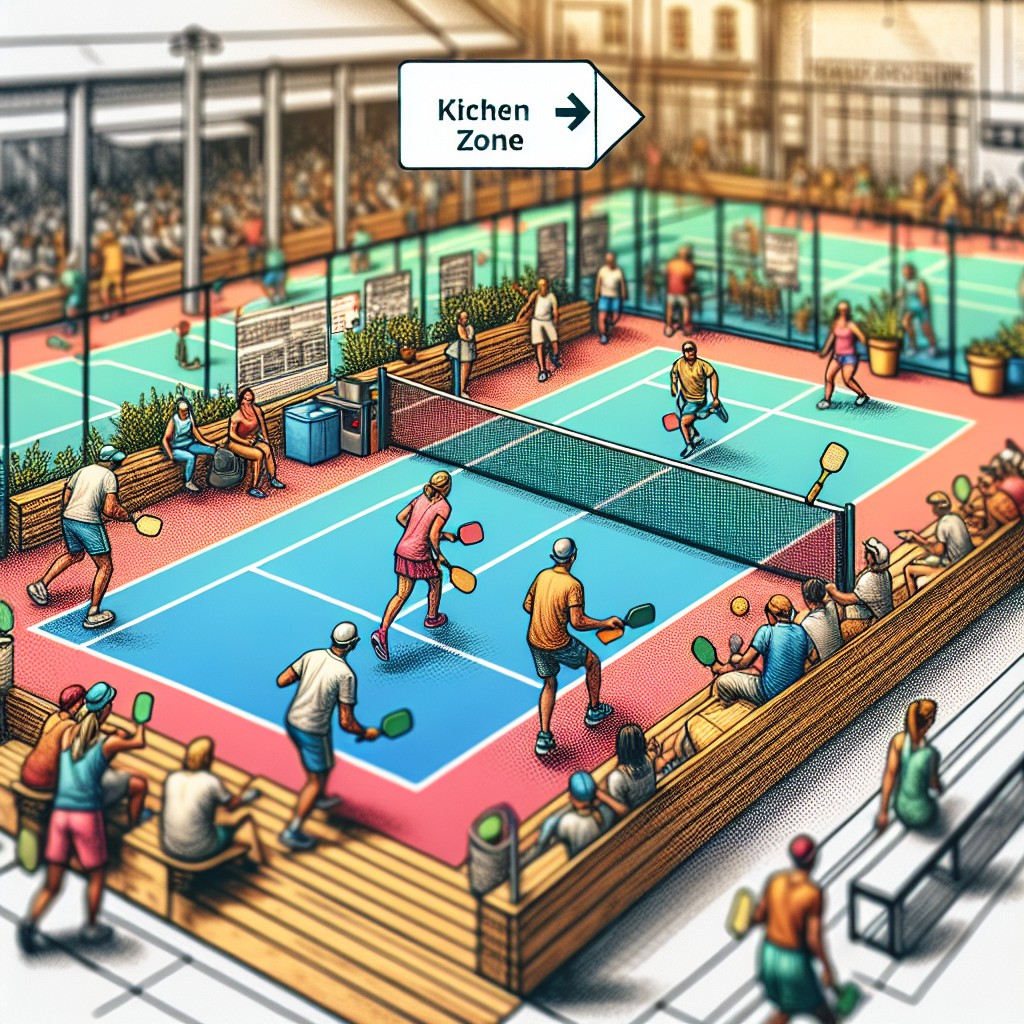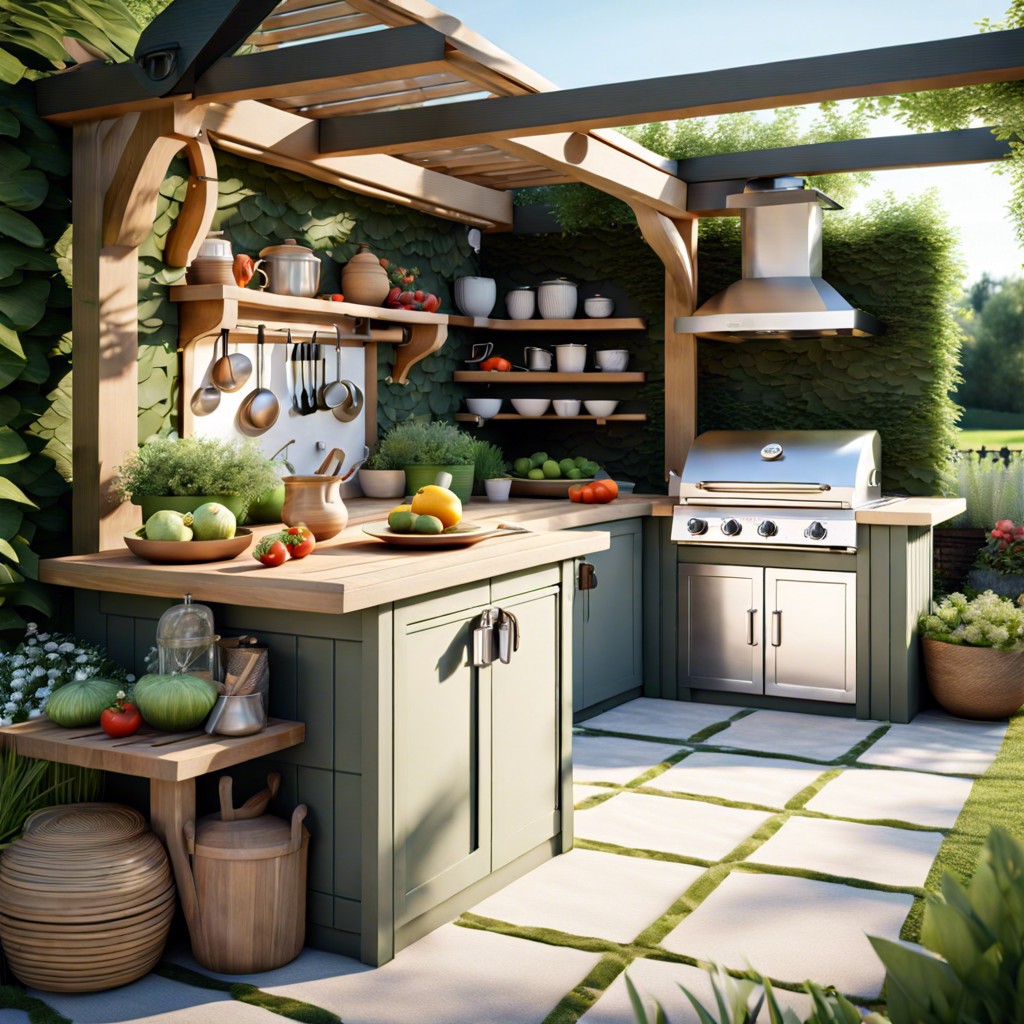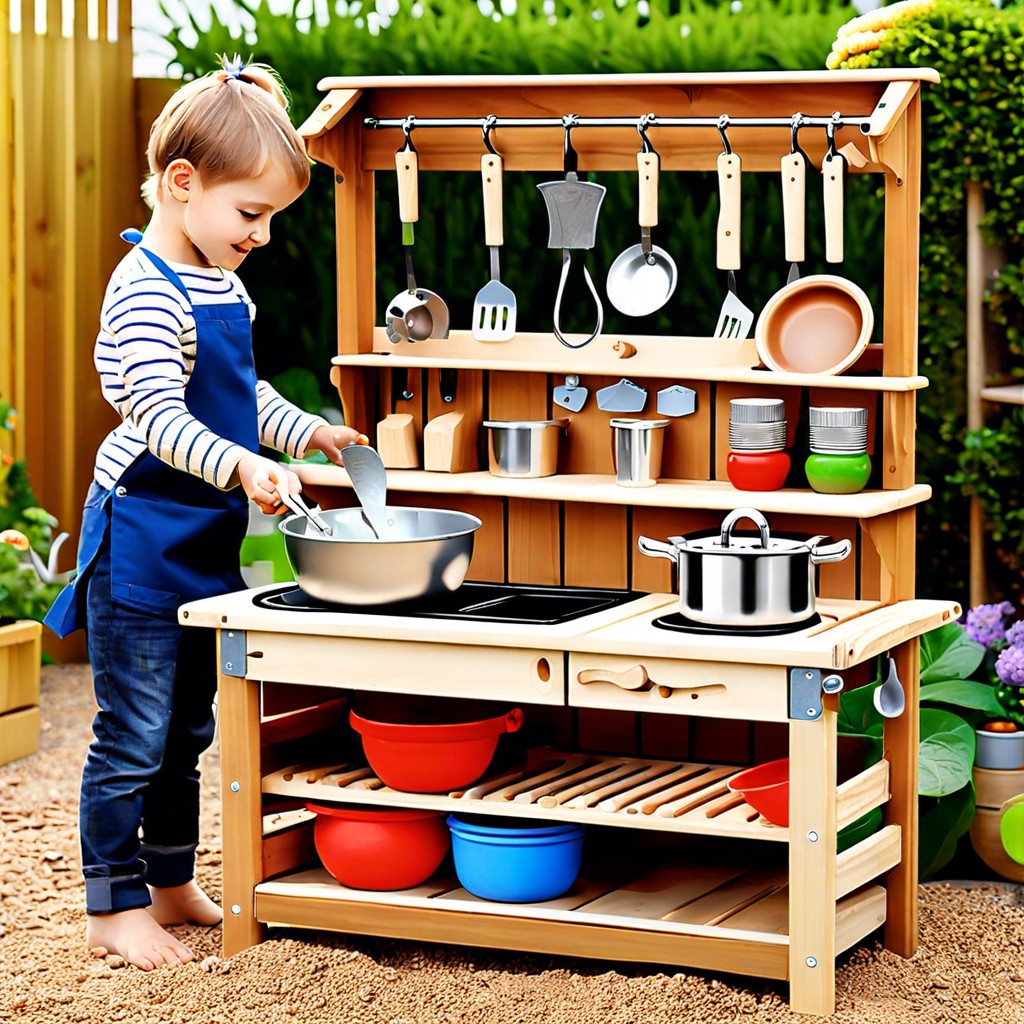Last updated on
Understanding the dimensions of a pickleball kitchen can drastically improve your gameplay; this article will guide you through pickleball kitchen sizes, and the implications of these dimensions on your strategy.
Key takeaways:
- Kitchen is the non-volley zone, a strategic area in pickleball.
- Kitchen rules: no volleying, no stepping in, and quick exit.
- Faults in the kitchen include stepping in or after a volley.
- Positioning: stay light, ready stance, partner awareness, quick transition, anticipate bounce.
- Tips: master soft game, be patient, improve footwork, use block volleys, practice third-shot drops, anticipate opponent’s shots.
What's Inside
What Is the Kitchen in Pickleball?

The term “kitchen” may invoke thoughts of home and cooking, but in pickleball, it takes on a different flavor. Officially referred to as the non-volley zone, this seven-foot stretch on both sides of the net is a strategic no-man’s-land where volleys are prohibited. It’s the space that keeps the game balanced, emphasizing skill over power, where one must let the ball bounce once before playing it.
Understanding its boundaries is key: it extends from the net to the non-volley line and spans the width of the court. Whether you’re aiming to drop a shot just beyond its reach or defending against an opponent’s soft game, maneuvering around the kitchen is essential. This zone levels the playing field, making the sport accessible and challenging for players of all ages and skill levels.
Furthermore, the kitchen influences gameplay style. While power players might chafe at its restrictions, those with a finesse-based approach often find this area to be their playground. Mastering the kitchen is a dance of patience and precision, requiring players to strategize rather than rely on brute force. In essence, it adds a layer of tactical depth to pickleball that distinguishes it from other racket sports.
Kitchen Rules For Pickleball
Understanding the parameters of the non-volley zone, famously known as the kitchen, is crucial to both pickleball enjoyment and strategy. Here’s a breakdown:
- Keep your feet out when volleying: Players must not step into this zone when executing a volley. Doing so constitutes a fault.
- The momentum rule: Ensure your momentum doesn’t carry you into the kitchen after a volley, even if the initial contact was outside.
- The drop shot is an exception: If the ball bounces within the kitchen, players may step in to play their next shot.
- Exiting the zone: After making a play from the kitchen, players must exit promptly to avoid hindering play or committing a fault on subsequent volleys.
- Double bounce rule: Remember that following the serve, the ball must bounce once on each side before volleys are allowed, affecting kitchen play.
- Partner positioning does matter: If a player’s partner violates the kitchen rules, it also results in a fault against the team.
These rules shape the game’s pace and encourage a variety of shots and strategies. Practicing how to navigate the kitchen effectively can give players an edge over their opponents.
Faults in the Non-Volley Zone
Understanding when a fault occurs in the pickleball kitchen is crucial for both new and seasoned players. A fault in this area typically happens under the following circumstances:
1. Volleying the ball while standing in the non-volley zone is a primary way to commit a fault. It’s important to let the ball bounce first if you find yourself inside the kitchen lines during play.
2. Stepping on the non-volley zone line while executing a volley also results in a fault. Keep your footwork in check to ensure you stay clear of the lines when hitting the ball out of the air.
3. Following through into the kitchen after a volley can be subtle but it’s still a fault. Be mindful of your paddle’s swing and make sure it doesn’t carry you into the non-volley zone.
4. Even if the ball is dead, touching the non-volley zone before the end of a point counts as a fault. Patience is key; wait for the point to be properly concluded before moving into this space.
5. Finally, dropping any item into the kitchen while volleying the ball, such as a hat or paddle, immediately constitutes a fault. Keep a tight grip on your gear to prevent such mishaps.
Remembering these points will help you navigate the non-volley zone without giving away unnecessary points to your opponent.
How to Best Position Yourself In or Out of The Kitchen?
Mastering your position in relation to the kitchen, or the non-volley zone, can significantly elevate your pickleball game. Here are strategic pointers to help you make the most of this crucial area:
1. Stay light on your feet – Keeping active and ready to move allows for quick volleys and prevents getting caught off-guard by a swift shot.
2. Maintain a ready stance just behind the kitchen line when not volleying – This gives you the ability to step into the kitchen to scoop up a dink or step back to handle a lob.
3. Utilize split step timing – As your opponent strikes the ball, a small hop that lands as they make contact will ensure you are grounded and ready to move in any direction.
4. Partner awareness – When playing doubles, sync with your partner’s movement to cover the entire width of the court effectively, minimizing gaps for opponents.
5. Transition swiftly from the baseline – When moving forward from the baseline, aim to reach the kitchen line quickly after the return of service to establish your presence at the non-volley zone.
6. Anticipate the bounce – Letting the ball bounce once can position you favorably for a strategic play, keeping in mind that after the bounce, shots from within the kitchen are fair play.
These points can serve as a mental checklist during play, ensuring that you’re maximizing your positional advantage while adhering to the essentials of kitchen play. With consistent practice, your kitchen prowess will become an integral part of your pickleball strategy.
Tips to Exploit the Non-Volley Zone
Master the soft game. Drop shots, also known as dinks, are essential. These softly hit balls land in the opponent’s kitchen, forcing them to hit upward and potentially setting you up for a more aggressive shot.
Stay patient. Adequate kitchen play often involves longer rallies. Patience can force an opponent into making mistakes or taking risky shots.
Improve footwork. Quick, nimble feet allow you to transition in and out of the kitchen line efficiently, essential for covering dinks and capitalizing on volley opportunities.
Utilize the block volley. When at the kitchen line, use a block volley to absorb the power from a hard hit ball, dropping it into the opponent’s non-volley zone and keeping them back.
Practice third-shot drops. The third shot of the game (your second return after the serve) can be a soft arc into the kitchen, making it difficult for opponents to attack and allowing you to move forward to the net.
Anticipate your opponent’s shots. Reading body language and paddle position can give clues about whether you should prepare for a dink or a faster volley, helping you maintain control of the kitchen play.
Building these skills translates into strategic advantage, allowing you to dictate the pace within the non-volley zone and keeping opponents on their toes.




